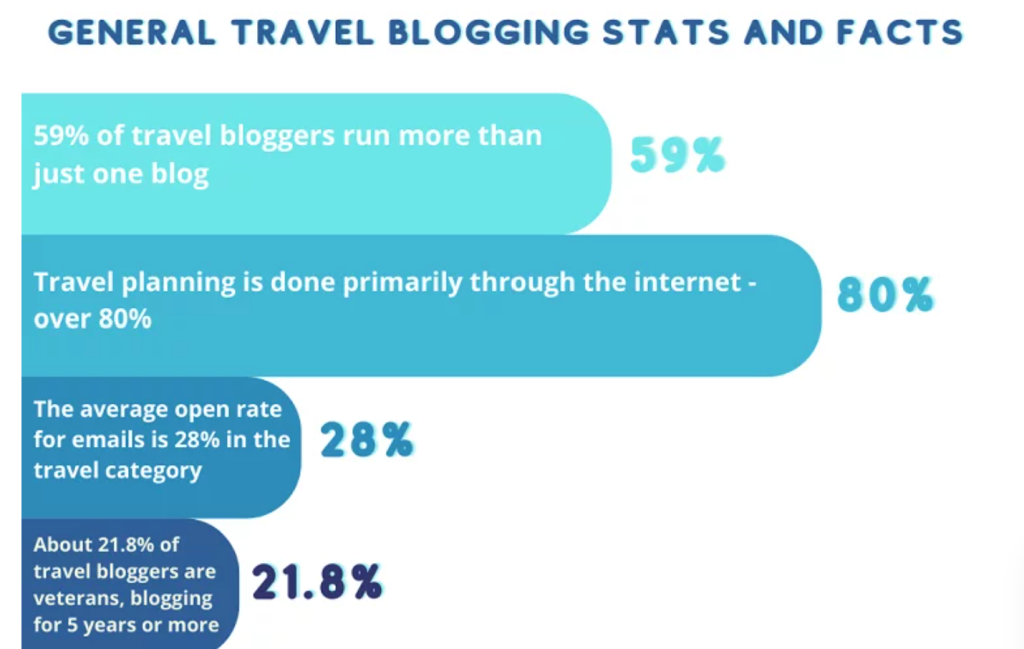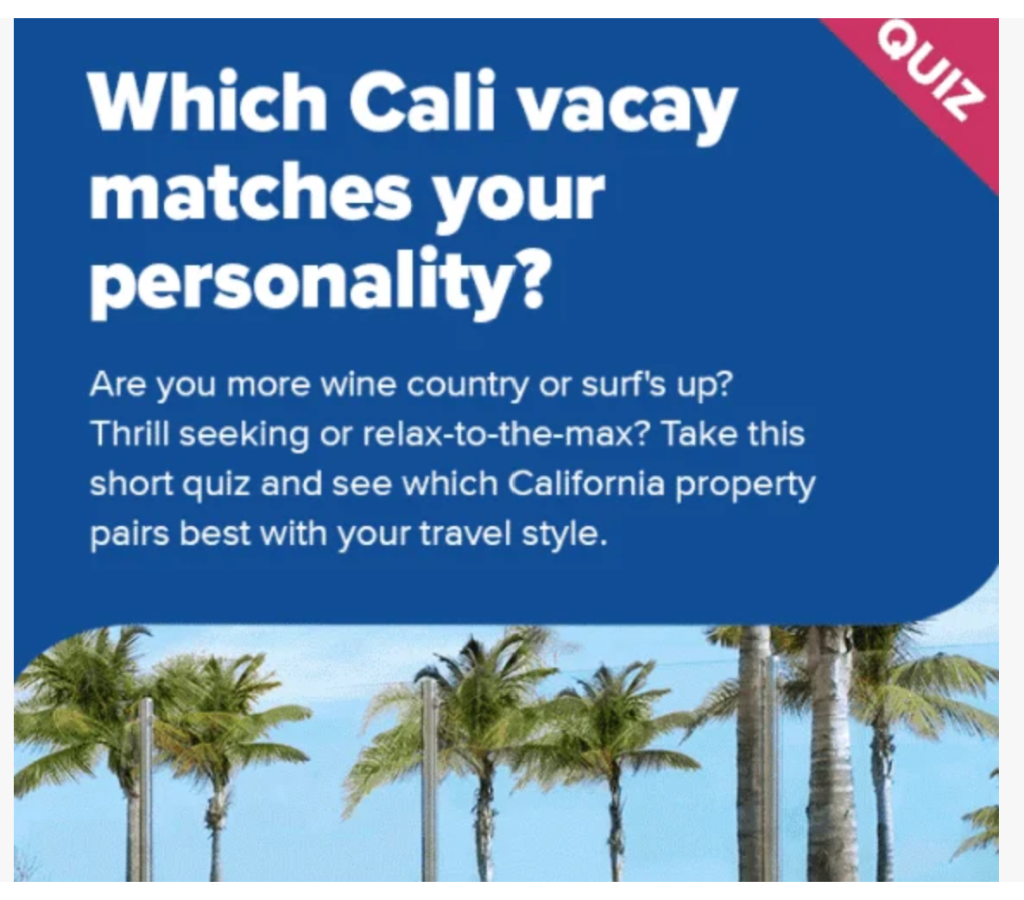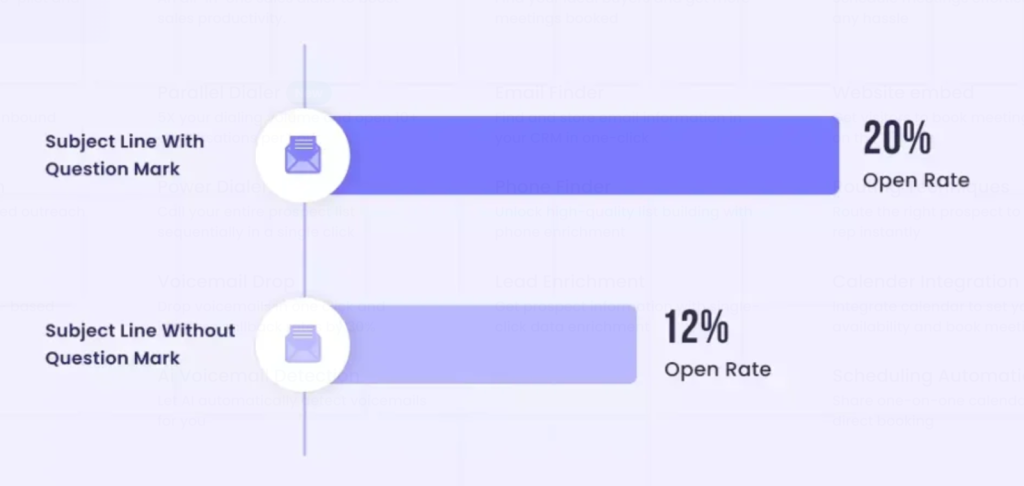- Home
- Targeted Tactics
- How to Grow Your Travel Blog w ...

I will be very honest here — when I first contemplated starting a travel blog, I felt discouraged by how oversaturated the space already was. It seemed like every other travel blog covered the same few destinations and advice, and I worried how I could set myself apart, if at all.
I knew I had to find my very own niche (in my case, I’m a 40-year-old professional who travels for work and fun—not a college backpacker or mommy blogger). Even with a somewhat unique angle, growing a readership felt daunting and at times challenging. That’s when I discovered the power of travel blog email marketing as a way to directly reach people who cared about my perspective.
In this article, I want to share ways that helped me leverage all the power of mail marketing for travel bloggers—from building a list from scratch to engaging readers with stories, automating my newsletter, and finally, learning how to monetize it without losing authenticity. Let’s start!
Build a Subscriber List to Grow Your Travel Blog
I had to learn how to start a travel blog email list from zero, and it turned out to be easier once I used the right strategies. Here are the key tactics I used for building an email list for a travel blog:
- Place opt-in forms on your blog. Don’t hide your newsletter signup. Instead, add email opt-in forms in high-visibility spots like your sidebar and footer, and consider using an exit-intent popup that appears when a reader is about to leave. I was initially hesitant about popups, but they can be incredibly effective. One prominent blogger reported that adding a timed popup form took him from 40 new signups a day to 350 overnight! While a static sidebar form is more subtle, and a popup grabs attention—I use both. Even a passive footer form can steadily capture interested readers, since it’s modest yet always there for those who decide to subscribe.
- Offer irresistible lead magnets. I learned that an email opt-in offer is basically trading value for an email address. For example, offering a destination checklist for a popular city or a camping trip planner can encourage readers to sign up. So, I created freebies that work for my audience. In my case, a printable travel itinerary and a mini destination guide were the right choice. Free travel planners, top 10 attraction lists, or resource libraries full of downloadable tips all work great.

- Promote signups on Instagram, TikTok, and YouTube. I regularly remind my social media followers that I have a free newsletter and what they’ll get from it. Post Instagram Stories about your new free guide, add a subscribe link in your TikTok bio, or mention your newsletter at the end of YouTube videos—in other words, use every platform. By pinning a signup post and talking about your freebie regularly, you can convert more of your followers into email subscribers
Travel Blog Newsletter Ideas Your Readers Will Love
When I first started sending a travel blog newsletter, I wasn’t sure what to include. Should I just copy and paste my latest blog post? Or write something completely different? Over time, I learned that newsletters work best when they feel like a blend of inspiration and useful tips with a bit of personal touch.
Here are a few travel blog newsletter ideas that consistently get good results:
💎 Post digests. A weekly or monthly roundup of your recent blog posts is an easy win. Add one-line teasers so readers know what they’ll get when they click.
💎 Behind-the-scenes stories. Share the things that you don’t include in your blog too. It can be the packing chaos, travel mishaps, or funny cultural encounters. These stories make your content very relatable, as we have all been through that.
💎 Exclusive tips. Reward subscribers with hidden gems you don’t post anywhere else. When readers feel like they’re getting special access, they stay subscribed longer—one study found that exclusivity can improve retention by up to 25%.
💎 Photo diaries. Since travel is visual, dedicate an email to a handful of images with captions. The majority of travelers say that visuals inspire them to take action, so don’t underestimate the power of photos.
💎 Reader Q&A. Ask your audience to send in their questions and answer them in your emails. This turns your newsletter into a conversation, which makes readers involved further.
Pro tip: The best travel blog newsletters combine different formats—sometimes a digest, other times a story or a visual diary. This variety keeps subscribers curious and prevents them from getting tired.

Personalize Your Travel Blog Emails with Segmentation
Here’s an insider email tip for travel bloggers: personalize your newsletters as much as possible. That doesn’t just mean using the subscriber’s first name in the greeting (though you should do that too); it means using segmentation to send the right content to the right people. Here are a few ways you can segment to create more personalized newsletters:
- By interests or travel style. This is a big one. Consider what types of content you create and who tends to read them. Not everyone on your list will be into every category. For example, I have a segment for “adventure/outdoors,” so when I wrote a new guide for national park hikes, I made sure to send an email about that to the hiking/camping folks specifically. They loved it, and my open rate was high because it matched their interests. Considering that 53% of consumers say they get too many irrelevant emails from brands, segmentation needs to become one of your key priorities for personalized newsletters.
- By location or home base. If your audience spans multiple regions or countries, location-based segmentation can be very useful. One travel email marketing example I can think of is an airline ensuring a subscriber segmented like “Jason from Boston” only getting flight deals departing from Boston. You can apply the same principle at a smaller blogger scale. I sometimes do this with time zones, too—sending emails at optimal times based on where the segment lives.
- By behavior. This one is a bit more advanced, but many email platforms will let you segment people based on what they click or engage with. Pay attention to your email analytics: if a subset of subscribers consistently clicks on articles about, say, Asia travel, or always opens emails when you mention food tours, that’s valuable data. You could create a segment like “Interested in Asia” or “Foodie travelers” based on past click behavior. Then deliver them more of what they clearly like.

How to Promote Your Travel Blog Posts via Email
If you’re wondering how to promote a travel blog without solely relying on Google or Instagram, look no further than your email list. One huge advantage of building that list is that you have an eager audience ready to check out your new content. Here’s how I promote travel blog posts via email to drive traffic and engagement:
💎 Link directly to your blog posts with strong calls to action. Whenever I publish a new post on my travel blog, I make sure to feature it prominently in my next email. Rather than just saying, “I wrote a new post, check it out,” I hype it up a bit. I’ll include an image or a compelling excerpt from the post and then a clear CTA button like “Read the Full Story” or “Discover [Destination].” Because your email subscribers opted in, they’re already interested in your content, so a direct link usually gets a good click-through.
💎 Tease content in emails to spark curiosity. The trick is to give just enough detail to make readers want more. If your email already contains the full article, there’s no reason for anyone to click. So, don’t do that—instead, share a snippet and then leave the rest on your blog. Don’t forget that subject lines that use curiosity (known as the curiosity gap) boost open rates better than generic ones.
💎 Cross-promote your social channels. A quick P.S. inviting readers to follow you elsewhere can work really well. I’ll often say, “P.S. I’m sharing behind-the-scenes clips from this trip on Instagram—come check it out!” That short sentence can build connections across platforms, so your readers engage with you in more than one place. Studies show people are more likely to click blog links if they also follow a brand on social media.
💎 Collaborate with other bloggers or travel brands. Swapping features with another blogger or partnering with a travel brand provides you with access to their readers too. When I did a newsletter exchange with a food travel blogger, both of us saw a spike in traffic and gained new subscribers. Collaborations can also be giveaways, co-created guides, or even sponsored spots. As long as it’s a genuine fit, it’s a win-win: your readers get new content, and you expand your reach without much effort.
Optimize Your Travel Blog Email Marketing for Engagement
Having an email list is one thing, but keeping your subscribers engaged and responsive is another. I’ve learned that little adjustments in how you design and send your emails can make a big difference. Here are some of the best email marketing strategies for travel blogs (IMHO):
⭐ Use curiosity-driven subject lines. Your subject line is the first (and sometimes only) impression you make. For travel blogs, I love using a bit of intrigue or excitement. For example, instead of a boring subject like “July Newsletter #1,” I might write “Guess what happened on my trip to Bali…” See how those make you want to know more? Aim for around 4–7 words or ~40–50 characters for best results. One thing I do is keep a swipe file of great subject lines from other newsletters (travel and non-travel) that made me open, and then adapt them to my content.

⭐ Keep your design mobile-friendly and image-rich. Nearly half of all emails (41.6%) are opened on mobile devices, so your layout has to work on a small screen. Travel is also very visual, so add high-quality images that bring destinations to life. Remember that photos can substantially increase click-through (just don’t forget to compress files, add alt text, and make sure the email still reads well without images).
⭐ Balance storytelling with scannable formatting. Readers love a good story, but they don’t love a wall of text. Use short paragraphs, bullet points, and bold highlights to increase newsletter engagement. For example, a “Top 3 Packing Hacks” email with bolded tips is easy to scan, while a longer narrative can be broken up with subheadings like “Meanwhile in Morocco…” This mix lets you keep your conversational style while respecting limited attention spans.
⭐ Experiment with sending frequency and timing. There’s no single “best” frequency for travel blog newsletters, but consistency surely matters. Studies suggest every two weeks hits a sweet spot for many audiences, while another found that Tuesdays and Thursdays around 10 a.m. often perform best. The point is: you need to find out what works best for your readers, as everyone’s case is slightly unique.
Automate Your Travel Blog Newsletter for Growth
At some point I realized I couldn’t keep writing every single email by hand and on the fly. That’s when I started experimenting with travel blog email automation, and it completely changed how I managed my list. For me, automation did not mean losing the personal touch—it actually gave me more freedom to write thoughtful emails and connect with readers better too.
✨ Welcome series: Introduce yourself, your blog, and your best posts
The first automation I set up was an automated welcome series for bloggers. When someone subscribed, they got a short sequence of emails over the first week: an introduction to me and my story, a roundup of my most useful posts, and a free itinerary as a thank-you gift. Welcome emails get about 4x higher open rates than other types of campaigns, and in my own case, they consistently became the most-read messages I sent.
✨ Seasonal campaigns: Summer getaways, winter escapes, and holiday specials
With time I got more creative. I set up a few seasonal campaigns that run automatically every year. For example, in May, my subscribers get an email about summer travel guides, and in December, they get winter holiday inspiration. I don’t have to rewrite those emails each year—just update the links or add new photos. It feels fresh for readers, and it became hands-off for me. Free HTML email templates turned out to be a lifesaver for crafting beautiful email campaigns with just minor adjustments.
Free HTML email template example

✨ Re-engagement emails: Win back subscribers who stopped opening
Finally, I added a re-engagement sequence for people who hadn’t opened my emails in a while. It’s just two or three messages: a friendly “Hey, are you still planning trips?” note, then a reminder of what they might be missing, and finally a “click to stay” option before I remove them. I was hesitant at first, but cleaning my list this way has actually improved my open rates across the board. Research backs it up too: senders with smaller but engaged lists can see deliverability improved after pruning inactive subscribers.
Monetize Your Travel Blog Email List
When I had a decent number of subscribers, I started wondering how to actually earn something from it. Learning how to monetize a travel blog email list took me some trial and error, but eventually I found a few approaches that felt natural and didn’t scare readers away.
🔍 Promote affiliate products (gear, hotels, tours)
My first step was trying out affiliate marketing for travel bloggers. I began recommending the things I was already using on my trips—my backpack, the booking platform I trust, even a tour I loved. Instead of just dropping a link, I’d write about how I used it and why it mattered to me personally. To my surprise, these emails got more clicks than I expected. It makes sense: recommendation emails tied to a real story can see almost 2x more engagement than generic ads.
🔍 Launch digital products: e-books, itineraries, travel courses
Later, I tested creating something of my own. For me, it was a printable itinerary and then a short e-book. The beauty of digital products is that once you make them, you can sell them again and again without extra work. Even small items I sold, like a $9 destination guide, gave me that first taste of passive income and a great deal of motivation.
🔍 Offer coaching, workshops, or paid travel guides
As my list grew, a few readers started asking for more personal advice. That’s how I ended up offering one-on-one itinerary planning and later a small workshop. I realized you don’t need a massive audience for this—just a handful of people willing to pay for direct access. And since they’d been following my emails for months, the trust was already there.
🔍 Work with brands for sponsored email placements
Once your blog has gained some traction and a pool of subscribers, you can try partnering with brands. A small gear company once paid me to feature them in my newsletter, and because I genuinely used their product, it didn’t feel forced. Sponsored placements can be a good income stream, but I’ve learned to only accept the ones that really fit my niche. Readers can tell when something feels authentic, so try partnering with brands whose products naturally fit your blog’s voice.

To Sum Up
So, what did I learn from this whole journey? Mostly the advantages of travel blog email marketing. Knowing when and how my content reaches my audience became an important part of my strategy for growing a travel blog with email.
This seems especially relevant for my own audience—travelers who are not always fully up to date with catching up on their socials. But with scheduled email campaigns, I can still make sure that the content reaches them at the right moment. And of course—having the freedom to build a career in a field as beautiful and competitive as this one? Not something I would exchange for anything in the world. Off to Bali!



